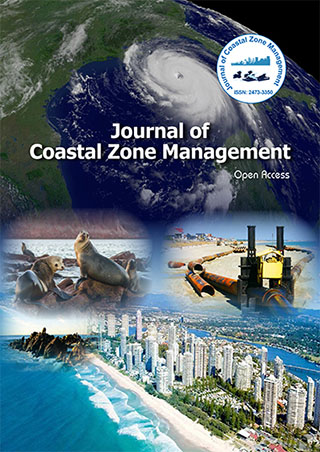Indexed In
- SafetyLit
- RefSeek
- Hamdard University
- EBSCO A-Z
- OCLC- WorldCat
- Publons
Useful Links
Share This Page
Journal Flyer

Open Access Journals
- Agri and Aquaculture
- Biochemistry
- Bioinformatics & Systems Biology
- Business & Management
- Chemistry
- Clinical Sciences
- Engineering
- Food & Nutrition
- General Science
- Genetics & Molecular Biology
- Immunology & Microbiology
- Medical Sciences
- Neuroscience & Psychology
- Nursing & Health Care
- Pharmaceutical Sciences
Development of an efficient modeling approach to support economically and socially acceptable flood risk reduction in coastal cities Case study of Can Tho city, Mekong Delta, Vietnam
3rd International Conference on Coastal Zones and Oceanography
May 18-19, 2018 Singapore
Hieu Ngo, Roshanka Ranasinghe, Assela Pathirana and Chris Zevenbergen
IHE-Delft, Netherlands
University of Twente, Netherlands
Delft University of Technology, Netherlands
Posters & Accepted Abstracts: J Coast Zone Manag
Abstract:
Coastal city flooding can have serious effects on human activities and properties in residential areas. Historically, commonly adopted approach for flood risk assessments was based on deterministic estimates of expected flooding due to predefined return period flood events. In rare situations, mostly in developed countries where advanced modeling capabilities, computational resources and financial resources are available, which allows for fully probabilistic assessment of flood hazard and associated risk (e.g. VNK2 study in the Netherlands). Main obstacles to fully probabilistic flood hazard/risk assessments are the unavailability of financial and technological resources, especially in case of developing countries. This study aims to develop a modeling approach that involves an easy to use, open-source model to obtain rapid multiple estimates of flooding and enables fully probabilistic flood hazard and associated economic risk estimates with limited financial and technological resources. To achieve the above objectives, this study focused on Can Tho city, Mekong Delta, Vietnam. Firstly, a simplified model for Mekong Delta, which can provide accurate predictions of water levels in the target area, is built based on existing complex model. The predicted water levels are then used to force an established 1D/2D coupled drainage/flooding model to provide inundation levels. This combined modeling approach is used to obtain future exceedance statistics of inundation levels under climate change and growth scenarios. The exceedance statistics of inundation levels are then combined with available economic data (population growth, urban expansion and densification, property value, etc.) to produce quantitative economic risk maps for both the present and future. Finally, an interactive serious gaming tool, which follows the approach adopted in the Blokkendoos philosophy used in the Dutch Room for the River initiative, is built with a user-friendly interface for co-designing of risk reduction measures with flexible user options. This tool is piloted in a multi-stakeholder environment in Can Tho city. h.ngo@un-ihe.org
